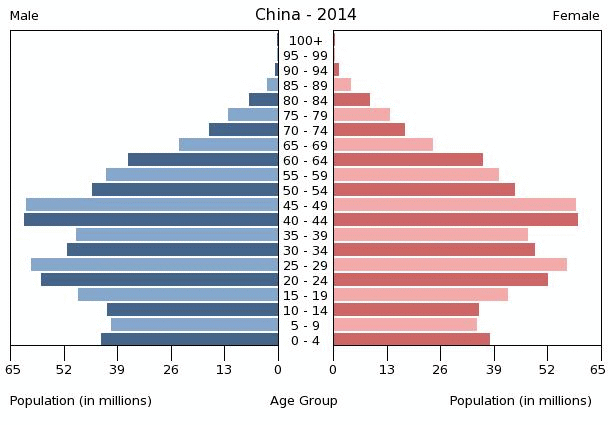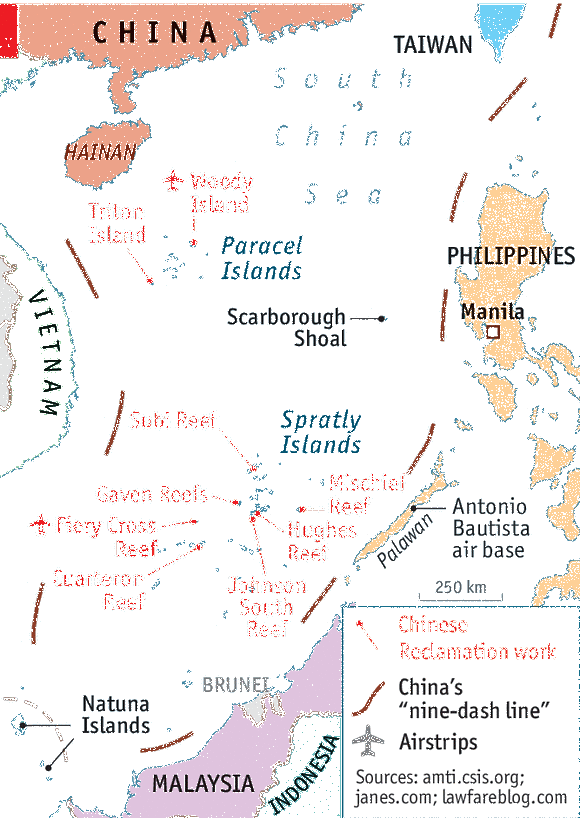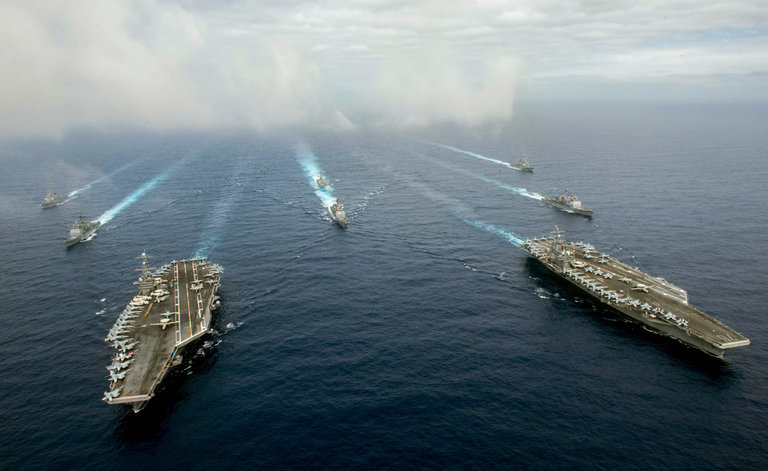Changing Presidents: Will Russia or China Move Against Us?
Aug 24 2016"We move inexorably toward our nation's moment of maximum vulnerability, when our democracy's leadership changes hands 
January 20th. It is a moment when our adversaries may probe for weakness and will be tempted to test us."
This quotes from fairly deep in our earlier piece on Donald Trump's world outlook and the concern that, as we make the transition to a new and inchoate administration, Vladimir Putin might find our moment of disarray irresistible for making his next move.
Or might Kim Jong-un, now that North Korea has finally staged a successful missile flight after several failures landing it close to Japan, a country that the U.S. is sworn to defend, decide to go the extra miles at the moment when the American leadership is changing hands.
And then there's China, which the earlier piece touched on only briefly. The scenarios for Russia and North Korea are hypothetical, but for China it's already happening. For two years, China has been turning rocks and coral in the South China Sea into artificial islands and fitting them out with airfields, advanced radar and most recently surface-to-air missile batteries. Will China — enraged at the United Nation's Court of Arbitration's resounding ruling in mid-July against its accroachment of the South China Sea, which it calls "a farce directed by Washington" — find the changeover the opportune moment to challenge our ships or overflights of those waters with something more than close encounters to test the new president's reaction to a serious incident when little of the new government is in place?
forceful risingWhat has changed in the last couple of years is that China has reached a point where it no longer believes it need hide behind its theme of "peaceful rising". Bellicose statements are repeatedly heard from its leadership, its military and China's media, charged as it is with indoctrinating the public with the government's policies and propaganda against the U.S. Under the nationalistic leadership of its president, Xi Jinping, the nation openly speaks of the nine-dash line, one of three lines it draws on maps of the seas surrounding China like the widening rings from a stone dropped in water, the first enfolding almost all of the South China Sea, the last extending deep into the Pacific, reaching as far as the Aleutians and Hawaii. These are China's intended zones of control. Maps in the media are captioned "not one dot less". Beyond becoming the new hegemon of Asia, China's plan is to drive the United States from the western Pacific.
China is in now in a hurry. It cannot afford to wait. The reason is that the nation of 1.6 billion faces a baby boom that far dwarfs our own when staggering numbers reach old age in coming years, evident from the middle-aged bulge in this chart. 
What the chart also shows is that the boomers will leave behind too few workers to support them. China will soon begin to pay the price of the policy that for almost four decades restricted couples to a single child. That is already felt in the decline of the nation's workforce. After peaking in 2012, the working-age populace dropped by 4.87 million last year, a pace that quickened from the 3.71 million decrease the year before.
The government finally abandoned the one-child policy the first of this year, but a more sophisticated populace is proving hesitant to answer the government's call to give birth to tomorrow's workers; the problem for couples is that they cost money today. In big cities like Shanghai, only 25% of couples plan to grow their families. To keep the economy going, China will have to look for workers outside its borders, said Howard French, a former Shanghai bureau chief for The New York Times on the PBS "NewsHour". But where would enough be found, given China's staggering population numbers? "There’s no obvious candidate."
Which is why we need be concerned that China is in a race to establish its control of the seas now, before what French calls "the biggest aging crisis that the world has ever seen" is upon it, when — with too few earners to carry the load — the Chinese economy will be overwhelmingly burdened with the cost of sustenance and health care of the aged.
Before that vise tightens, China has been ramping up its military with a budget that increases at over 9% a year. With 2 million in uniform, it has the world's biggest army by far, but its emphasis now is to build a blue water navy to rival the U.S., with a plan for 342 ships by 2020, 78 of them submarines. Its latest subs are armed with multiple-warhead nuclear missiles with a range of 4,500 miles. On the occasion of the launch of a new missile-armed destroyer, the People's Liberation Army newspaper said the navy will soon commission a "massive number" of destroyers. China is training its pilots to land on aircraft carriers its stealthy JU-15 fighter, thought to be more advanced than our navy's "Super Hornets”. They are developing an anti-ship missile that the Pentagon fears could sink our carriers. Adm. Gary Roughead, the retired U.S. Chief of Naval Operations, said that China's naval chief, Adm. Wu Shengli, "doesn’t want to build a navy that’s equivalent to the U.S. He wants to build a navy that surpasses the U.S.”. We covered the subject in greater detail last fall titled "China's Military Buildup: It's Aimed at Us".
a sea of troubleThe South China Sea is no lake; it is ocean by another name, and China is claiming a section of the world's oceans the size of Mexico as its very own. It claims "indisputable sovereignty" based on "historic rights" that Xi Jinping claims date "since ancient times".
The nine-dash line — the first that China draws — pushes up against the coastlines of the Philippines, Malaysia and Vietnam, all which also lay claim to the Sea's shoals and outcroppings of rock, some even below water at high tide, that China has been converting into islands and military bases. In 2012 the Chinese wrested control of Scarborough Shoal from the Philippines, just 120 nautical miles from the Philippine coast and four times that distance from the nearest point on China's
mainland. The Chinese have not yet built a base there, but the intent is clear, because Scarborough forms something of a strategic triangle with the long airstrip it has laid on Fiery Cross Reef to its southwest and the missile batteries installed on Woody Island to its northwest.
The Philippines took its complaint to the U.N.'s arbitration court in the Netherlands which in mid-July brought a verdict against China that went well beyond what was expected, striking down China's every claim, even chastising it for the harm its dredging has done to the aquatic environment.
As are 167 other nations, China is a party to the United Nations Convention on the Law of the Sea of 1982 which accords to each party an exclusive economic zone extending 200 miles in all directions for fishing and mining but which is freely navigable by all. A second rule that says nations have the right to disallow incursion without permission into a zone extending 12 miles from their shoreline. The tribunal admonished China that the conventions it had agreed to are land-based, that historic claims "were extinguished" by the treaty, that no feature in the Spratlys is a natural "island" under the convention so there is nothing on which to center an economic zone, that the zones belong to the nearest actual land which, in the case of the Spratlys and Scarborough Shoal, is the Philippines.
outlawsChina immediately called it an "illegal" ruling, announced that it would ignore its Convention commitment, continue its program of annexation, and become viewed as an outlaw nation if it follows through on its threat. To show contempt, it immediately landed two civilian planes on one of the artificial islands.
Provocations in the South China Sea have occurred regularly since our round-up of last fall in "Don’t Believe China Is Looking for a Fight?". On the eve of the court's ruling, China's navy was conducting a live-fire exercise in the Sea. In June two Chinese jets intercepted an American surveillance plane in a dangerous fly-by that our crew said came within 50 feet. In March, a Chinese coast guard vessel snapped the tow line to free a Chinese trawler caught fishing in Indonesia's waters by their patrol boat. China's trawlers have become quasi-military ships that continually run off the fishing boats of other nations from their own waters.
In the East China Sea, Japan is alarmed by China's aggressive actions. In June for the first time a Chinese warship was spotted close to the uninhabited, Japan-controlled Senkaku islands. Days ago, two Chinese coast-guard ships entered the territorial waters of the islets. China has 16 oil drilling platforms which are in international waters of the Sea, but Japan has lodged protests over what it claims is a radar installation on one of the rigs. Japan had to scramble its jet fighters 571 times in the year ended in March to deal with Chinese aircraft probing the area.
open seasThe U.S. has declared its resolve to continue the service it has performed for the world for decades, using its navy to ensure that, beyond the 12-mile limits, the seas everywhere are freely navigable for "innocent passage". United States policy, as expressed by Defense Secretary Ashton Carter last October, is that "the United States will fly, sail and operate wherever international law allows, as we do around the world, and the South China Sea will not be an exception".
So we continue with occasional fly-throughs and just before the court ruling conducted exercises with two carriers, the John C. Stennis and Ronald Reagan, and six accompanying ships, all in all comprising 12,000 sailors and 140 aircraft.
But this show of force was in the seas east of the Philippines, not the South or East China Seas. That's sensible; conducting those operations
U.S. carriers in an exercise east of the Philippines.
in the South China Sea would have made the U.S. the provocateur. However, meeting with Xi Jinping in Washington in May, President Obama warned China not to move on Scarborough Shoal nor declare the South China Sea to be an air defense zone, forcing civilian airliners to make long detours to avoid confrontations with the Chinese air force. Before Congress at the time, Adm. Harry Harris, commander of U.S. forces in the Pacific, accused China of "clearly militarizing" the disputed waters. "You'd have to believe in a flat Earth otherwise". Yet, in a Wall Street Journal interview this August, the admiral revealed the U.S. reluctance to aid its Pacific allies, saying, "I don't think we have as a mission enforcing tribunal rulings", while at the same time expressing disappointment that we are losing the initiative by not conducting enough freedom of navigation operations. He has pressed his bosses for more but "so far has been rebuffed". So China is left with ambiguity over just what the U.S. will do if it does take that next step when we are changing presidents.
Please subscribe if you haven't, or post a comment below about this article, or
click here to go to our front page.


If the Democratics get in again, say good bye to all of our allies in the Far East. They will fall into China’s hands. The do nothing policy of Obama has made the US a marshmallow on the world stage.
Thanks. Nice succinct summary of events to date.